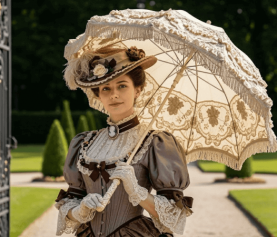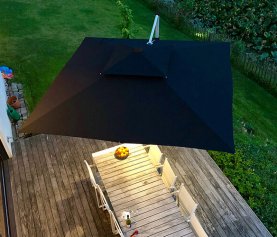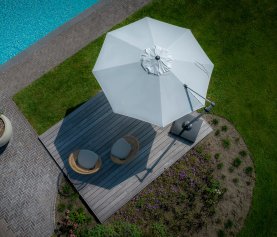Imagine a perfect summer’s day. The sun is high, the skies are blue, and you’re sitting comfortably beneath a parasol. It’s more than just a welcome source of shade—it creates atmosphere, brings people together, and extends your outdoor living space. But did you know that the parasol has a history stretching back thousands of years, filled with stories of power, prestige, and ingenuity?
At Solero, we believe a parasol is more than just fabric and metal. It’s part of a rich tradition. Join us on a journey through the fascinating evolution of this remarkable object.
The dawn of shade: from palm leaves to power symbols
Our journey begins around 4,500 years ago in ancient Egypt and Assyria. The first parasol-like objects were nothing like the refined designs we know today. Think fans made from palm leaves or feathers, mounted on long handles—known as flabella. These were not for just anyone. They were the privilege of royalty and the nobility.
Why? Of course, they offered relief from the brutal sun. But more importantly, they were a sign of status. A pale complexion was the ultimate indicator that one didn’t work outdoors. Being shaded meant being elite. Servants would hold the parasol aloft, not just for comfort, but as a moving symbol of power. A portable throne room, in a sense.

Eastern innovation: the birth of the umbrella (and the clever parasol)
While parasols in the West remained symbols of elite status, ancient China was already pushing boundaries. Around 2,000 to 3,000 years ago, the Chinese were crafting parasols from silk and bamboo. Then came a turning point: they began treating paper with wax and lacquer. The result? The world’s first waterproof umbrella.
It was a game-changer. The parasol became a true all-weather tool. China also pioneered folding mechanisms—records of collapsible designs date back as early as 21 CE. Even the Chinese character for umbrella (傘) resembles a modern folding frame. And once again, colour and design signalled hierarchy: red and yellow parasols were reserved for the imperial family.
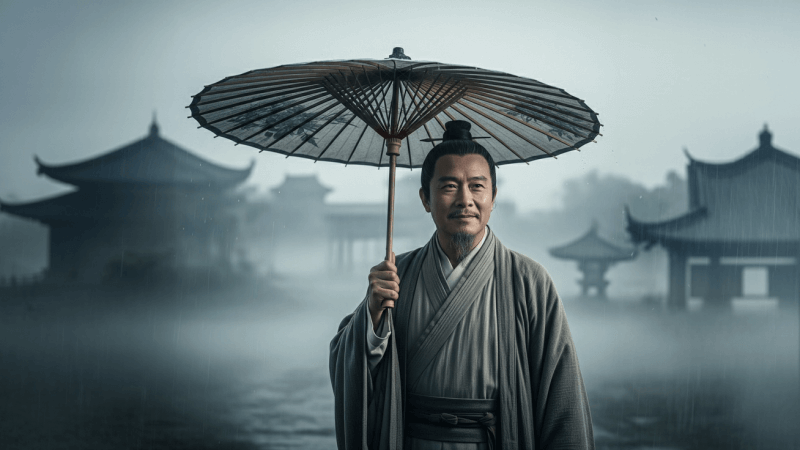
Spiritual meaning
The parasol also took on deeper symbolism in India. Known as the Chatra, it is one of the eight sacred symbols (Ashtamangala) in Hinduism, Jainism, and Buddhism. It represents royalty, divinity, and spiritual authority. Offering shade to a god or revered figure was a gesture of respect, even worship. In essence, it became a mobile shrine.
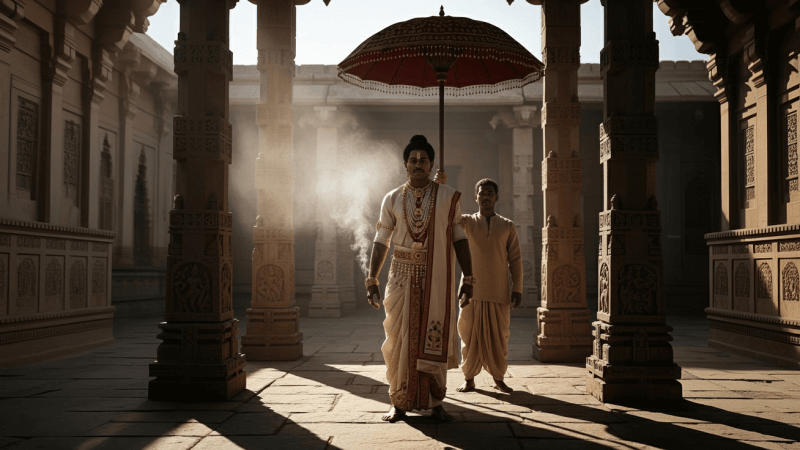
Fashion accessory among upper-class
The parasol made its way west. In 5th century BCE Greece, the skiadeion became a fashionable accessory among upper-class women. Men who used one were often mocked for being effeminate—an early glimpse into gendered expectations of fashion. Foreign women were even required to carry parasols for Athenian citizens, reinforcing class divides.
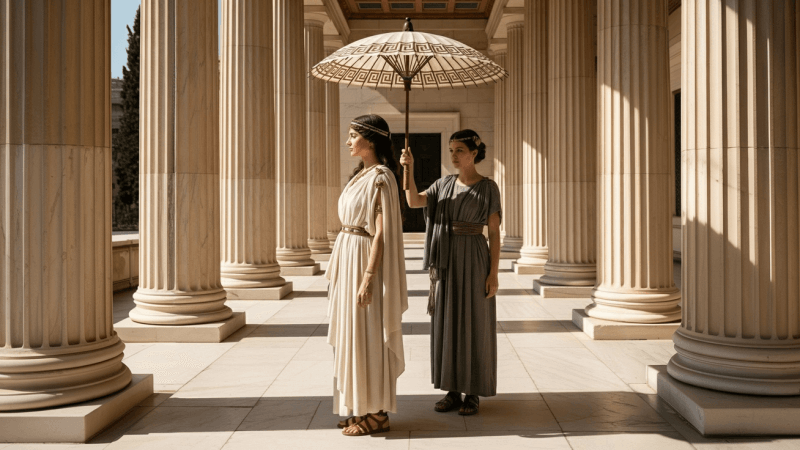
The European renaissance: a stylish return
After a quiet period during the Middle Ages (with rare exceptions like the Doges of Venice), the parasol made a dramatic return in Renaissance Europe. Trade routes to Asia brought exotic materials and ideas, and the parasol re-emerged as a fashionable statement among the aristocracy.
The 18th and 19th centuries marked the golden age of the European parasol. For women of status, it was an essential accessory. Gone were the simple leaf fans—now we saw parasols made from fine silk, lace, satin, and adorned with embroidery, fringe, and ruffles. Handles were crafted from ivory, mother-of-pearl, or silver—works of art in themselves. Parasols became part of social etiquette (yes, there were flirting techniques involving parasols!). From the delicate styles of the Victorians to the fluid curves of Art Nouveau, the parasol reflected the art and fashion of the day. And thanks to the invention of the steel rib frame in the 19th century, parasols became more robust and durable.
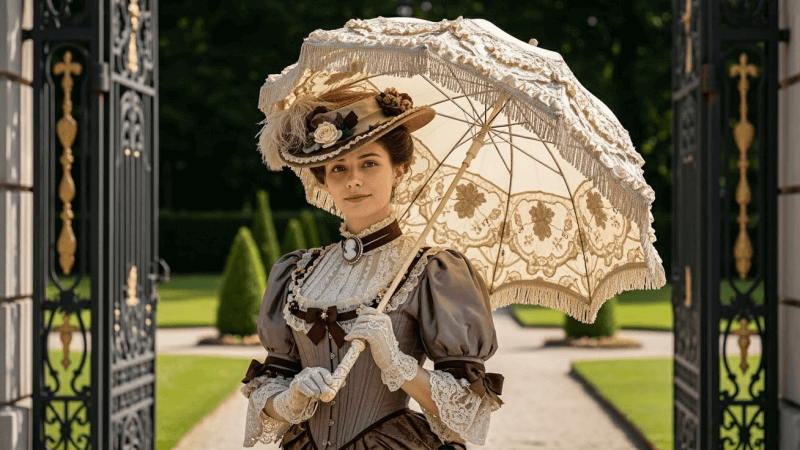
The 20th century: from fashion to function
At the start of the 20th century, parasols were still a symbol of elegance, gracing garden parties and high-society gatherings. But everything changed in 1928 when Hans Haupt invented the folding umbrella. Suddenly, protection became compact, portable, and democratic.
Post-WWII innovation brought materials like nylon and polyester, making parasols lighter, more durable, and affordable. By the 1960s and ’70s, the modern garden parasol was in full bloom—larger, stronger, and with tilt mechanisms for better sun control. Aluminium or wooden frames and waterproof canopies turned parasols into everyday essentials, not just style statements.
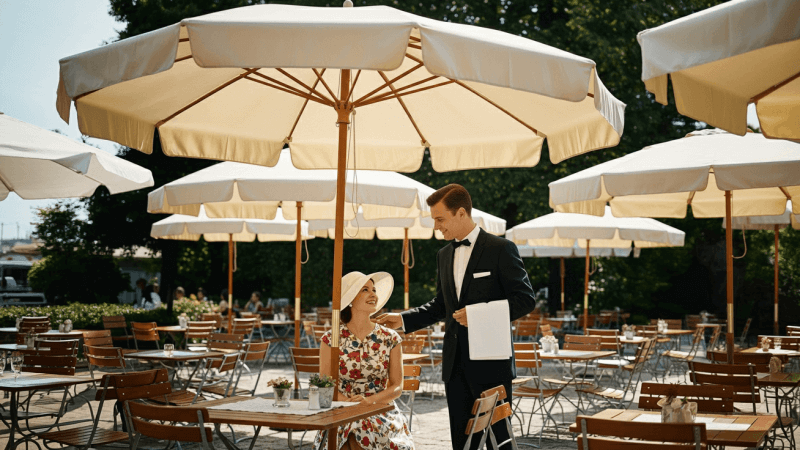
Today’s shade… and Solero
In today’s world, parasols have made a comeback—driven by our desire for comfortable outdoor spaces and, crucially, awareness of sun safety. What was once a status symbol for a pale complexion is now a tool for health and wellbeing.
This is where Solero comes in. We’re a Dutch family business, founded in 2004, focused on one thing: creating the best parasols. Not an afterthought—our core mission.
We believe a modern parasol should be more than just a pole and a canopy. It should be durable, stylish, easy to use, and tailored to your needs—whether that’s for your backyard or a bustling café terrace.
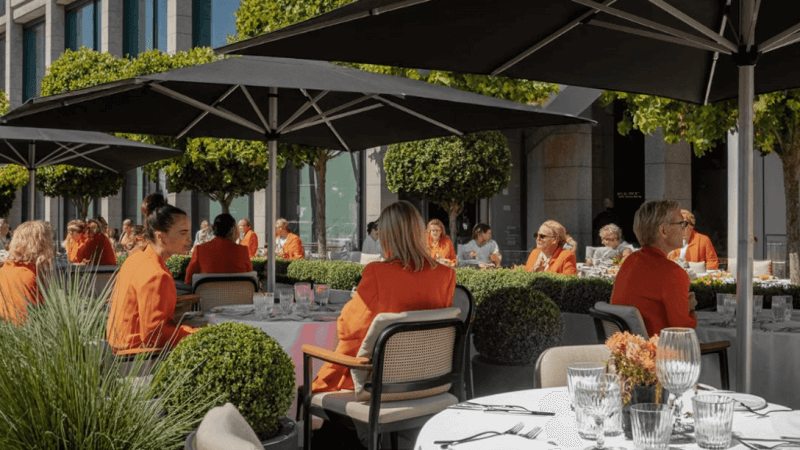
The future of shade: smart and sustainable
The parasol continues to evolve. We’re seeing smart technologies—think solar panels, sensors, automation—and a growing emphasis on eco-friendly materials. As people spend more time outdoors and climate change leads to hotter days, the parasol is no longer a luxury. It’s a necessity.
At Solero, we’re proud to be part of this ongoing story. We blend timeless knowledge of shade with today’s technology and materials to give you the best outdoor experience possible.
So next time you’re enjoying life under a Solero parasol, remember—you’re taking part in a tradition that began with pharaohs and emperors, passed through silk-clad fashion icons and Chinese inventors, and now stands for quality, comfort, and sustainability.
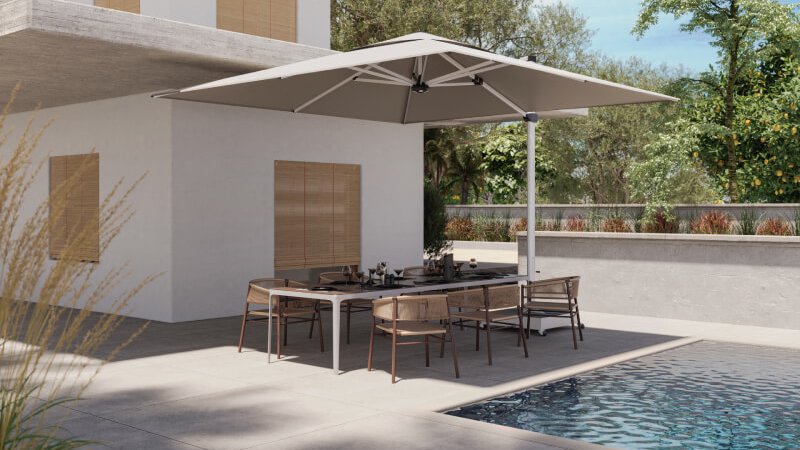
Solero: where history, quality, and innovation meet
Our parasols are the result of centuries of evolution, combined with Dutch craftsmanship and innovation. We use premium, pure aluminium for frames, ensuring strength and long-lasting performance. Our fabrics are solution-dyed for deep, lasting colour—resistant to fading even after years of use. They’re water-repellent and offer top-tier UV protection (high UPF ratings).
And we don’t stop at the basics. We offer built-in LED lighting and heating options so you can enjoy your outdoor space from early spring to late autumn. And because sustainability matters, our parasols are fully recyclable, and we proudly partner with Trees for All.
From flexible cantilever models like the Palestro and Fratello to heavy-duty centre pole designs like the Basto Pro (which can handle wind speeds up to 60 km/h), Solero offers a wide range—direct from stock or custom-made. We’re committed to long-lasting quality in a world full of disposables.


